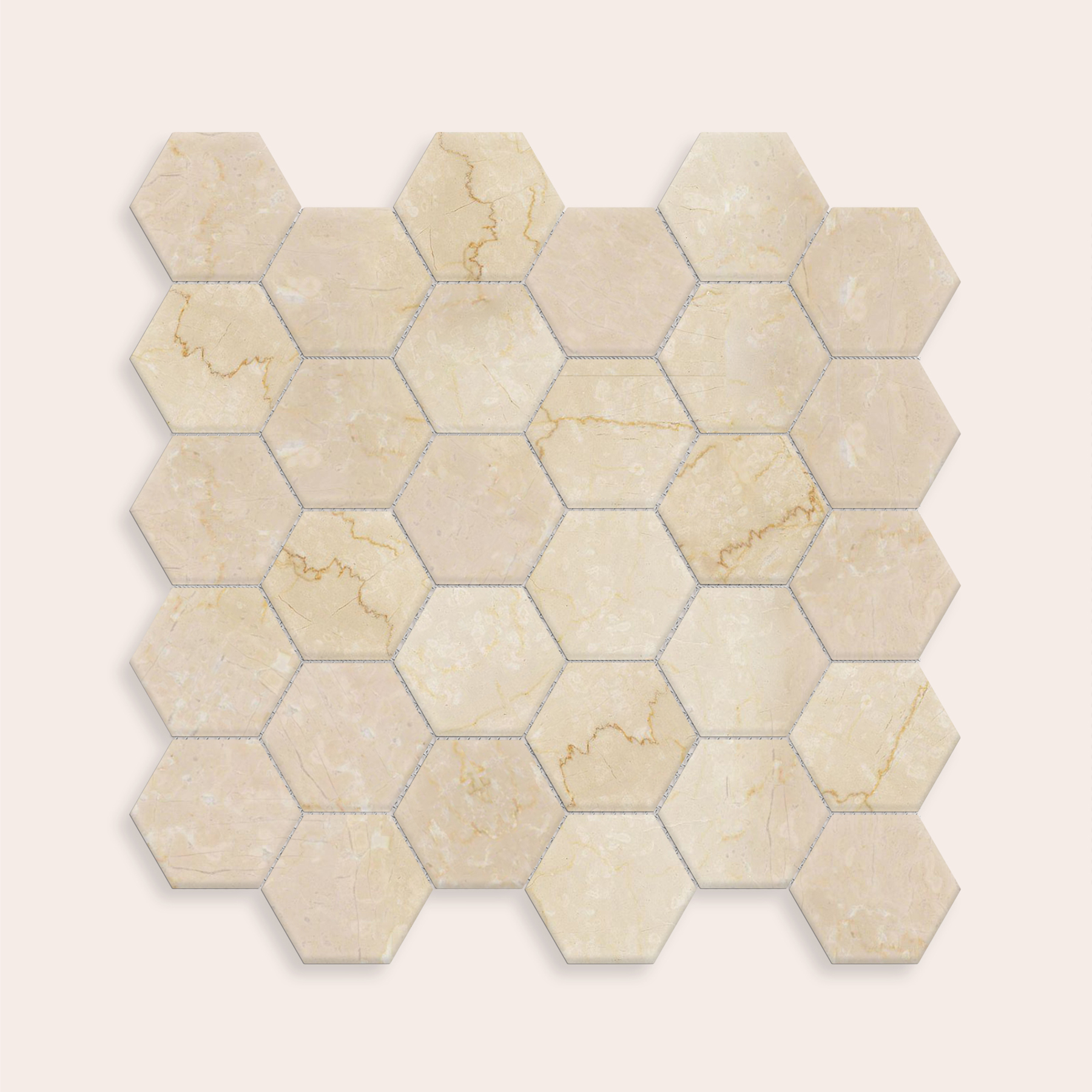Around one hundred million years ago, in what is today identified as the province of Brescia, there was a lagoon sea. It was rich in limestone mud and teeming with microorganisms. The processes of sedimentation, cementation, and recrystallization have compacted that sea of life, creating what is known today as Botticino Marble, whose chromatic varieties are determined precisely by the concentration of organic and inorganic inclusions in the muddy primordial mixture.The microorganisms sedimented in this way have acquired fame and found some appreciation in the world, and today can be found in the White House in Washington D.C., in the Altare della Patria in Rome, in the Statue of Liberty in New York, and in the foundations of Brixia, present-day Brescia.Bring their splendor to your surfaces too.
Shape
Hexagonal Mosaic
Revisiting is experimenting. Experimenting is part of the process we are so devoted to at Fangorosa.
Our marble. Reduced to a minimum, in thicknesses and formats. Placed on a net and cut in its most improbable form, it becomes a sheet of small hexagons, which, like jewels set in a setting, recall the surfaces of precious Byzantine mosaics. A game between arts and matter, textures and shapes.

